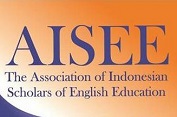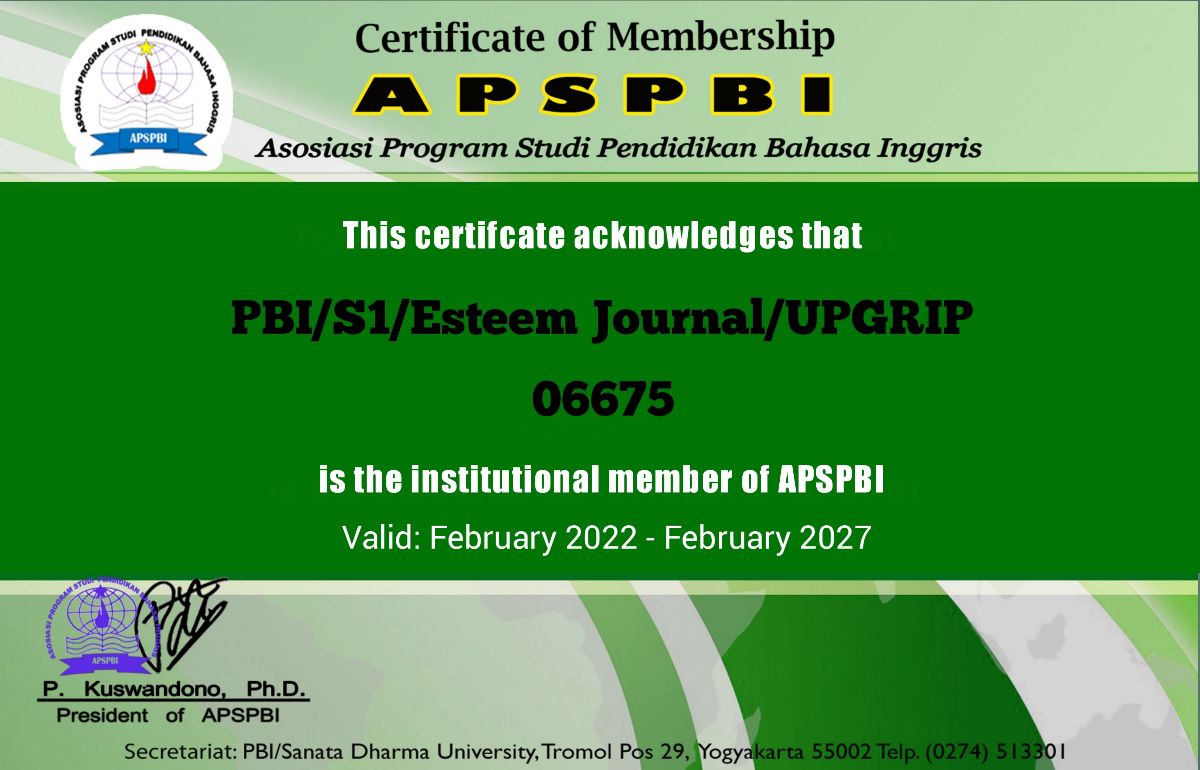The Use of Mind Mapping Technique to Improve the EFL Students’ Reading Comprehension Ability of Darussalam Polytechnic
DOI:
https://doi.org/10.31851/esteem.v4i1.5136Keywords:
mind mapping technique, reading comprehension, Darussalam Polytechnic EFL learnersAbstract
Mind maps are visual frameworks such as  figures, diagrams, or  charts used to  present structural knowledge spatially with the intention of empowering comprehension and learning. Mind maps are effective in terms of helping communicate information because they can clarify complex concepts into simple, meaningful displays so that learners can develop a holistic understanding of the content to be learnt. Teachers may use mind mapping technique at  different  stages  of  instruction for  example during  instruction to  prepare  students to approach new  information and clarify complex ideas, or  after instruction to  assess  and reinforce learning and instruction. This article reports on an investigation into the use of mind mapping technique whether it can improve reading comprehension ability and the students’ opinions towards the use of mind mapping technique. The research design used in this study was one-group pre test-post test design. The study employed both quantitative and qualitative data analyses from pre-and post-tests, a questionnaire, and an interview. The participants of the  study were  35  first-year  students  enrolling  in  a  compulsory reading  course  called Communication and Reading Skills at Darussalam Polytechnic of Palembang.  Fifteen students (5 highly successful, 5 who did not show any improvement, and 5 unsuccessful) were selected for retrospective interviews. The results suggested that 1) The English reading comprehension post test mean score of students was higher than the pre test mean score at the 0.05 level of significance; 2) most students were satisfied with their own reading comprehension ability; 3) they enjoyed working in  group and  agreed that  mind mapping technique was  a  useful technique and can be applied to non- English subjects. Findings and implications for further research are discussion.
References
Duangporn, Nupong. ( 1998). English Teaching Problems and the Needs for Professional Development of Teachers of English In Education Extended School Under the Jurisdiction of The Office of Primary Educaton, Nakhonrachasima. Department of Linguistic. Mahidol University.
Ference, Marton & Shirley Booth. (1997). Learning and Awareness. Lawrence Erlbaum Associates, Publishers.
Gellof, Kanselaar. (2002). Constructivism and socio- constructivism. Retrieved February 18,2009 from the world wide web : http://pdts.uh.edu.
Jaya, A. 2017. Sentence Patterns of Narrative Text in English Textbook in Indonesia. English Community Journal. 1 (2).
Jaya, A. 2017. The Influence of Teachers’ Questioning Strategies on the Eleventh Grade Students’ Speaking Achievement at SMKN 1 Palembang.Jambi-English Language Teaching. 2 (1).
Lorna, Idol-Maestas & Valerie, J. Croll. (1985). The Effect of Training in Story Mapping Procedures on the Reading Comprehension of Poor Readers. The National Institute of Education. University of Illinois at Urbana Champign.
Piyarat, Deesri. (2002). The study of English Teaching Effective ness with Mind Mapping %Technique on Reading Comprehension and English reading Attitude, Master of Education, Curriculum and Instruction. Nakornsawan Rajabhat Universiity.
Downloads
Published
Issue
Section
License
Copyright Notice
Authors who publish with this journal agree to the following terms:
In order to assure the highest standards for published articles, a peer review policy is applied. In pursue of the compliance with academic standards, all parties involved in the publishing process (the authors, the editors and the editorial board and the reviewers) agree to meet the responsibilities stated below in accordance to the Journal publication ethics and malpractice statement.
Duties of Authors:
- The author(s) warrant that the submitted article is an original work, which has not been previously published, and that they have obtained an agreement from any co-author(s) prior to the manuscript’s submission;
- The author(s) should not submit articles describing essentially the same research to more than one journal;
- The authors(s) make certain that the manuscript meets the terms of the Manuscript Submission Guideline regarding appropriate academic citation and that no copyright infringement occurs;
- The authors(s) should inform the editors about any conflict of interests and report any errors they subsequently, discover in their manuscript.
Duties of Editors and the Editorial Board:
- The editors, together with the editorial board, are responsible for deciding upon the publication or rejection of the submitted manuscripts based only on their originality, significance, and relevance to the domains of the journal;
- The editors evaluate the manuscripts compliance with academic criteria, the domains of the journal and the guidelines;
- The editors must at all times respect the confidentiality of any information pertaining to the submitted manuscripts;
- The editors assign the review of each manuscript to two reviewers chosen according to their domains of expertise. The editors must take into account any conflict of interest reported by the authors and the reviewers.
- The editors must ensure that the comments and recommendations of the reviewers are sent to the author(s) in due time and that the manuscripts are returned to the editors, who take the final decision to publish them or not.
Authors are permitted and encouraged to post online a pre-publication manuscript (but not the Publisher final formatted PDF version of the Work) in institutional repositories or on their Websites prior to and during the submission process, as it can lead to productive exchanges, as well as earlier and greater citation of published work (see The Effect of Open Access). Any such posting made before acceptance and publication of the Work shall be updated upon publication to include a reference to the Publisher-assigned DOI (Digital Object Identifier) and a link to the online abstract for the final published Work in the Journal.





















